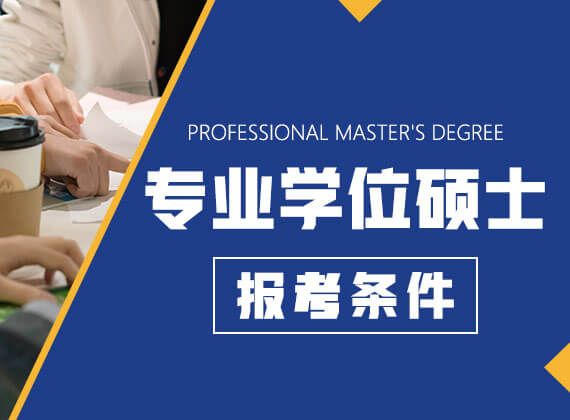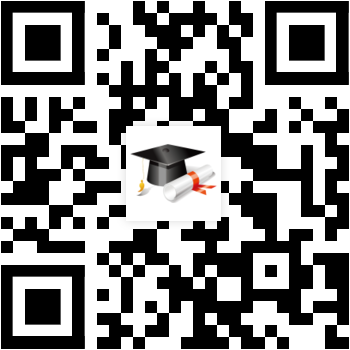非全日制双证研究生英语模拟试题及答案
来源:在职研究生招生信息网 发布时间:2016-11-11 14:35:13
距离非全日制双证研究生考试时间不到两个月了,考生需要多做模拟试题来加强自己的考场感觉,今天,在职研究生招生老师就为大家整理了相关模拟试题及参考答案,以供参考:
Section I Use of English
Directions:
Read the following text. Choose the best word(s) for each numbered blank and mark [A], [B], [C] or [D] on ANSWER SHEET 1. (10 points)
When television first began to expand, very few of the people who had become famous as radio commentators were equally effective on television. Some of the 1 they experienced when they were trying to 2 themselves to the new medium were technical. When working 3 radio, for example, they had become 4 to seeing on 5 of the listener. This 6 of seeing for others means that the 7 has to be very good at talking. 8 all, he has to be able to 9 a continuous sequence of visual images which 10 meaning to the sounds which the listener hears. In the 11 of television, however, the commentator sees 12 with the viewer. His role, therefore, is 13 different. He is there to make 14 that the viewer does not 15 some points of interest, to help him 16 on particular things, and to 17 the images on the television screen. 18 his radio colleague, he must know the 19 of silence and how to use it at those moments 20 the pictures speaks for themselves.
1. A. difficultiesB. successesC. sufferingsD. incidents
2. A. turnB. adaptC. alterD. modify
3. A. onB. atC. with D. behind
4. A. experiencedB. determinedC. establishedD. accustomed
5. A. accountB. sideC. pointD. behalf
6. A. efficiencyB. technologyC. artD. performance
7. A. commentatorB. TV viewerC. speakerD. author
8. A. OfB. ForC. AboveD. In
9. A. inspire B. createC. causeD. perceive
10. A. addB. applyC. affectD. reflect
11. A. occasionB. eventC. factD. case
12. A. somethingB. nothingC. everythingD. anything
13. A. equallyB. completelyC. initiallyD. hardly
14. A. definiteB. possibleC. sureD. clear
15. A. loseB. depriveC. relieveD. miss
16. A. focusB. attendC. followD. insist
17. A. exhibitB. demonstrateC. exposeD. interpret
18. A. LikeB. UnlikeC. AsD. For
19. A. purposeB. goalC. valueD. intention
20. A. ifB. when C. whichD. as
Section II Reading Comprehension
Part A
Directions:
Read the following four texts. Answer the questions below each text by choosing [A], [B], [C] or [D]. Mark your answers on ANSWER SHEET 1. (40 points)
Text 1
It’s plain common sense—the more happiness you feel, the less unhappiness you experience. It’s plain common sense, but it’s not true. Recent research reveals that happiness and unhappiness are not really two sides of the same emotion. They are two distinct feelings that, coexisting, rise and fall independently.
People might think that the higher a person’s level of unhappiness, the lower their level of happiness and vice versa. But when researchers measure people’s average levels of happiness and unhappiness, they often find little relationship between the two.
The recognition that feelings of happiness and unhappiness can co-exist much like love and hate in a close relationship may offer valuable clues on how to lead a happier life. It suggests, for example, that changing or avoiding things that make you miserable may well make you less miserable, but probably won’t make you any happier. That advice is backed up by an extraordinary series of studies which indicate that a genetic predisposition for unhappiness may run in certain families. On the other hand, researchers have found happiness doesn’t appear to be anyone’s heritage. The capacity for joy is a talent you develop largely for yourself.
Psychologists have settled on a working definition of the feeling—happiness is a sense of subjective well-being. They have also begun to find out who’s happy, who isn’t and why. To date, the research hasn’t found a simple formula for a happy life, but it has discovered some of the actions and attitudes that seem to bring people closer to that most desired of feelings.
Why is unhappiness less influenced by environment? When we are happy, we are more responsive to people and keep up connections better than when we are feeling sad. This doesn’t mean, however, that some people are born to be sad and that’s that. Genes may predispose one to unhappiness, but disposition can be influenced by personal choice. You can increase your happiness through your own actions.
21. According to the text, it is true that
[A] unhappiness is more inherited than affected by environment.
[B] happiness and unhappiness are mutually conditional.
[C] unhappiness is subject to external more than internal factors.
[D] happiness is an uncontrollable subjective feeling.
22. The author argues that one can achieve happiness by
[A] maintaining it at an average level.
[B] escaping miserable occurrences in life.
[C] pursuing it with one’s painstaking effort.
[D] realizing its coexistence with unhappiness.
23. The phrase “To date” (Para. 4) can be best replaced by
[A] As a result.
[B] In addition.
[C] At present.
[D] Until now.
24. What do you think the author believes about happiness and unhappiness?
[A] One feels unhappy owing to his miserable origin.
[B] They are independent but existing concurrently
[C] One feels happy by participating in more activities.
[D] They are actions and attitudes taken by human beings.
25. The sentence “That’s that” (Para. 5) probably means: Some people are born to be sad
[A] and the situation cannot be altered.
[B] and happiness remains inaccessible.
[C] but they don’t think much about it.
[D] but they remain unconscious of it.
Text 2
Over the pastcentury, all kinds of unfairness and discrimination have been condemned or madeillegal. But one insidious form continues to thrive: alphabetism. This, forthose as yet unaware of such a disadvantage, refers to discrimination againstthose whose surnames begin with a letter in the lower half of the alphabet。
It has long been known that a taxi firm called AAAA cars has a bigadvantage over Zodiac cars when customers thumb through their phonedirectories. Less well known is the advantage that Adam Abbott has in life overZo? Zysman. English names are fairly evenly spread between the halves of thealphabet. Yet a suspiciously large number of top people have surnames beginningwith letters between A and K。
Thus the American president and vice-president have surnamesstarting with B and C respectively; and 26 of George Bush’spredecessors (including his father) had surnames in the first half of thealphabet against just 16 in the second half. Even more striking, six of theseven heads of government of the G7 rich countries are alphabeticallyadvantaged (Berlusconi, Blair, Bush, Chirac, Chrétien and Koizumi).The world’s three top central bankers (Greenspan, Duisenberg and Hayami) areall close to the top of the alphabet, even if one of them really uses Japanesecharacters. As are the world’s five richest men (Gates, Buffett, Allen, Ellison and Albrecht)。
Can this merely be coincidence? One theory, dreamt up in all thespare time enjoyed by the alphabetically disadvantaged, is that the rot sets inearly. At the start of the first year in infant school, teachers seat pupilsalphabetically from the front, to make it easier to remember their names. Soshort-sighted Zysman junior gets stuck in the back row, and is rarely asked theimproving questions posed by those insensitive teachers. At the time thealphabetically disadvantaged may think they have had a lucky escape. Yet theresult may be worse qualifications, because they get less individual attention,as well as less confidence in speaking publicly。
The humiliation continues. At university graduation ceremonies, theABCs proudly get their awards first; by the time they reach the Zysmans mostpeople are literally having a ZZZ. Shortlists for job interviews, electionballot papers, lists of conference speakers and attendees: all tend to be drawnup alphabetically, and their recipients lose interest as they plough throughthem。
26. What does the author intend to illustrate with AAAA cars andZodiac cars?
[A] A kind of overlooked inequality。
[B] A type of conspicuous bias。
[C] A type of personal prejudice。
[D] A kind of brand discrimination。
27. What can we infer from the first three paragraphs?
[A] In both East and West, names are essential to success.
[B] The alphabet is to blame for the failure of Zo? Zysman.
[C] Customers often pay a lot of attention to companies’ names。
[D] Some form of discrimination is too subtle to recognize。
28. The 4th paragraph suggests that
[A] questions are often put to the more intelligent students。
[B] alphabetically disadvantaged students often escape form class.
[C] teachers should pay attention to all of their students.
[D] students should be seated according to their eyesight。
29. What does the author mean by “most people areliterally having a ZZZ” (Lines 2-3, Paragraph 5)?
[A] They are getting impatient。
[B] They are noisily dozing off。
[C] They are feeling humiliated。
[D] They are busy with word puzzles。
30. Which of the following is true according to the text?
[A] People with surnames beginning with N to Z are oftenill-treated。
[B] VIPs in the Western world gain a great deal from alphabetism。
[C] The campaign to eliminate alphabetism still has a long way togo。
[D] Putting things alphabetically may lead to unintentional bias。
Text 3
To paraphrase18th-century statesman Edmund Burke,“all that is neededfor the triumph of a misguided cause is that good people do nothing。”One suchcause now seeks to end biomedical research because of the theory that animalshave rights ruling out their use in research. Scientists need to respondforcefully to animal rights advocates, whose arguments are confusing the publicand thereby threatening advances in health knowledge and care. Leaders of theanimal rights movement target biomedical research because it depends on publicfunding, and few people understand the process of health care research. Hearingallegations of cruelty to animals in research settings, many are perplexed thatanyone would deliberately harm an animal。
For example, a grandmotherly woman staffing an animal rights boothat a recent street fair was distributing a brochure that encouraged readers notto use anything that comes from or is animals—no meat , no fur, nomedicines, Asked if she opposed immunizations, she wanted to know if vaccinescome from animal research. When assured that they do, she replied, “Then I wouldhave to say yes。” Asked what will happen when epidemics return, she said, “ Don’t worry,scientists will find some way of using computers。” Such well-meaningpeople just don't understand。
Scientists must communicate their message to the public in acompassionate, understandable way—in human terms, not in the language of molecular biology. We need tomake clear the connection between animal research and a grandmother's hipreplacement, a father's bypass operation, a baby's vaccinations, and even apet's shots. To those who are unaware that animal research was needed toproduce these treatments, as well as new treatments and vaccines, animalresearch seems wasteful at best and cruel at worst。
Much can be done. Scientists could“adopt”middleschool classes and present their own research. They should be quick to respondto letters to the editor, lest animal rights misinformation go unchallenged andacquire a deceptive appearance of truth. Research institutions could be openedto tours, to show that laboratory animals receive humane care. Finally, becausethe ultimate stakeholders are patients, the health research community shouldactively recruit to its cause not only well-known personalities such as StephenCooper, who has made courageous statements about the value of animal research,but all who receive medical treatment. If good people do nothing there is areal possibility that an uninformed citizenry will extinguish the preciousembers of medical progress。
31. The author begins his article with Edmund Burke's words to
[A] call on scientis
























